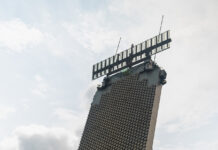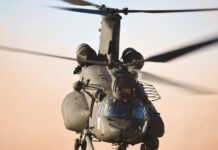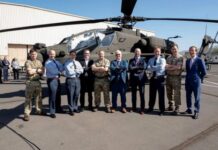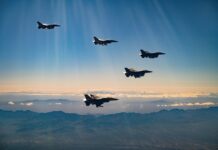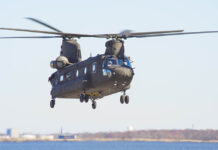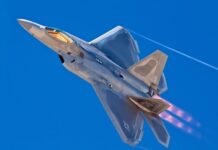The US Department of the Air Force has successfully negotiated a price agreement with Boeing for the E-7A Wedgetail airborne early warning and control (AEW&C) aircraft rapid prototype programme, the air force announced on 9 August 2024.
Boeing added in a press release the same day that the contract includes lifecycle development, training and support for the US Air Force’s (USAF’s) E-7A fleet.
The agreement paves the way for the delivery of two operationally representative prototype E-7A platforms.
“The undefinitized contract action has now been definitized, with a total contract value of USD 2,560,846,860 [EUR 2.34 billion],” the Department of the Air Force stated on its website.
“This agreement is a significant win for our warfighters, paving the way for ensuring the air force’s ability to provide advanced airborne moving-target indication in the coming years,” Assistant Secretary of the Air Force for Acquisition, Technology, and Logistics Andrew Hunter was quoted as saying. “It is also an exemplar of our ability to leverage and support the expertise and investments of our partners and allies to support our common security objectives.”
The rapid prototyping programme integrates US-based mission systems into existing E-7 airborne platforms to meet USAF requirements while simultaneously ensuring interoperability with coalition partners already operating the E-7 platform.
The E-7A provides advanced airborne battle management command-and-control and airborne moving-target indication (BMC2/AMTI) capabilities. Its multi-role advanced electronically scanned-array (AESA) radar “will enhance airborne battle management, providing improved situational awareness and enabling long-range kill chains with potential peer adversaries”, the Department of the Air Force stated.
Built on the Boeing 737-700 NG airframe, the E-7 AEW&C aircraft offers lower operating and sustainment costs, higher mission readiness rates and unmatched interoperability among a growing global user community, according to Boeing.
Boeing has supplied six E-7As to the Royal Australian Air Force and is currently producing three E-7As for the UK Royal Air Force (with military modifications underway in the UK), while NATO has also selected the type as its preferred AEW&C solution.
“Our customers have an urgent need for integrated battlespace awareness and battle management,” Dan Gillian, vice president and general manager of Boeing Defense, Space & Security’s Mobility, Surveillance & Bombers division, was quoted as saying in a company press release. “The E-7A is the airspace lynchpin to continuously scan the skies, command and control the battlespace, and integrate all-domain data, providing a decisive advantage against threats. With our open-systems-architecture approach, capabilities can be rapidly inserted over time as threats evolve,” Gillian added.
Until the E-7A is fielded, the USAF will continue relying on the E-3 Airborne Warning And Control System (AWACS) platform, “as ongoing E-3 modernization efforts meet the 2022 National Defense Strategy intent”, the USAF stated. The E-3 will continue with worldwide BMC2/AMTI operations as required by the USAF and the US Department of Defense.
The E-7A rapid prototyping programme is intended to inform a planned production decision in financial year 2026 (FY26). The two operationally representative prototype aircraft are planned to be delivered in FY28.







